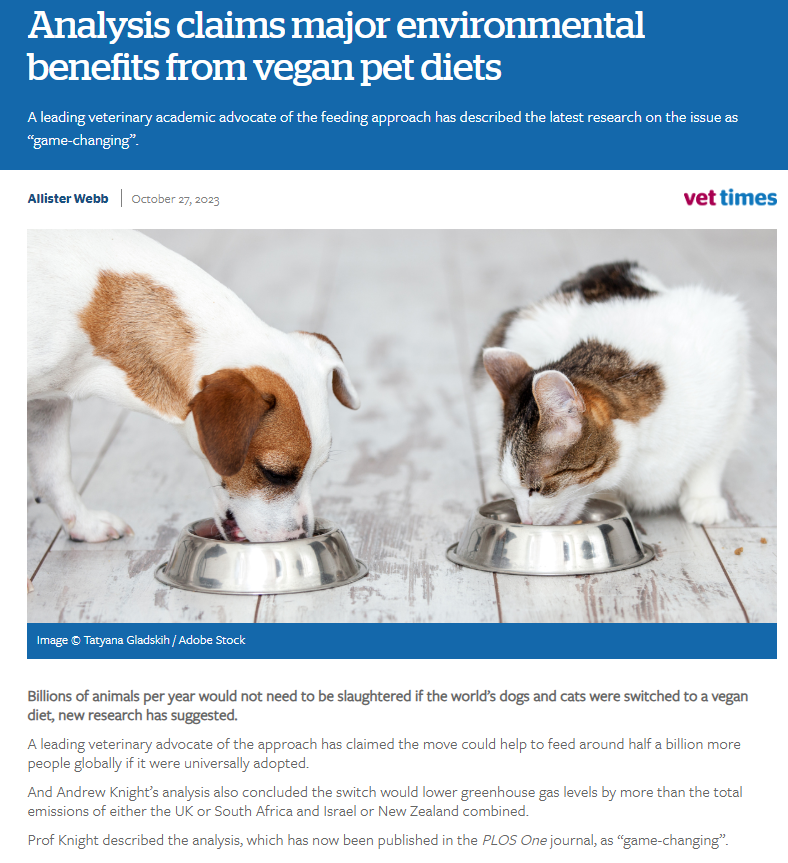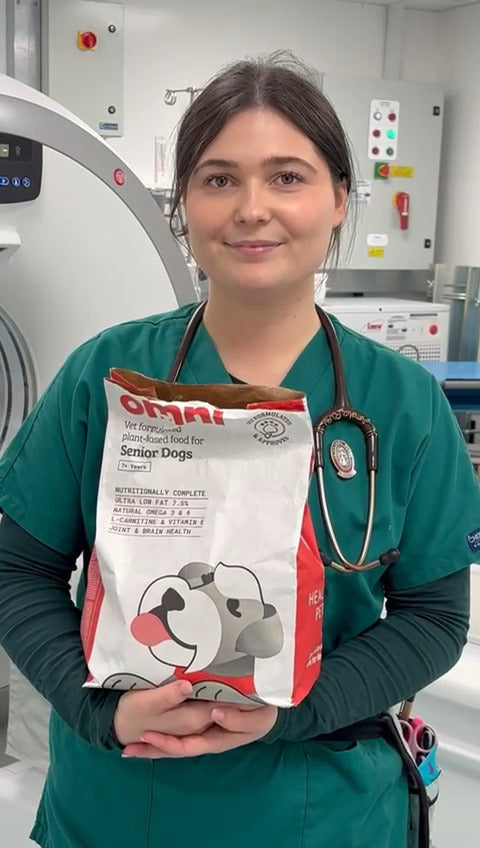Vet Times reports on Study Describing Massive Environmental and Animal Welfare Benefits of Vegan Pet Food

Vet Times reports on Study Describing Massive Environmental and Animal Welfare Benefits of Vegan Pet Food
A leading veterinary journal, The Vet Times, has reported on a study that outlines the considerable environmental and ethical benefits of plant-based diets for pets, including the numbers of animals who would no longer be facing slaughter and the negative impact of meat-based pet food on human food security.
The paper estimated that almost 1 in 10 land animals killed for consumption were used for cat and dog food. Furthermore, if all pets on the planet were switched onto nutritious plant-based diets, around half a billion more humans could be fed, too.
Researchers at Griffith University and the University of Winchester analysed multiple datasets, including the dietary energy requirements of pets within the US in 2020 and globally in 2018, US pet food ingredients, the average number of livestock required to supply pet and human diets, and various environmental sustainability indicators for plant- and animal-based foods.
In some instances, the number of animals killed for meat-based pet foods was surprisingly high: dog food alone made up almost 18% of the consumption of livestock animals in the USA.
The numbers of animals killed for consumption in 2018 were staggering:
- 75 billion poultry animals, of which 6.6 billion were used in dog and cat food
- 1.5 billion pigs, of which 132 million were used in dog and cat food
- 1 billion sheep and goats, of which 93 million were used in dog and cat food
- 354 million cows, of which 31 million were used in dog and cat food
- 727 million other land mammals, of which 65 million were used in dog and cat food
- It is also estimated that billions of aquatic animals are killed for dog and cat food in the US alone
The paper also details the potential relative environmental savings that could be made if humans, cats and dogs were switched to a plant-based diet.
Reduction in greenhouse gas emissions (GHG) equivalent to land area/country if each group was switched to a plant-based diet:
- Dogs = reduction in GHG equivalent to the entirety of the UK
- Cats = reduction in GHG equivalent to New Zealand
- Humans = reduction in GHG equivalent to the entirety of the EU
Relative land freed up equivalent to size of a country, if each group was switched to a plant-based diet:
- Dogs = A land mass freed up larger than Mexico
- Cats = A land mass freed up larger than Germany
- Humans = A land mass freed up larger than both the entirety of India and Russia
Amount of freshwater saved equivalent to renewable freshwater per country, if each group was switched to a plant-based diet:
- Dogs = Greater volume of freshwater saved than is present in Denmark
- Cats = Greater volume of freshwater saved than is present in Jordan
- Humans = Greater volume of freshwater saved than is present in Cuba
Additional people who could be fed using food energy savings equivalent to 2018 country populations, if each group was switched to a plant-based diet:
- Dogs = Entire population of the EU
- Cats = Entire population of the UK
- Humans = Every nation or region on Earth
The researchers highlighted that “it is important that people feed only commercial diets labelled as nutritionally complete, produced by reputable companies with good standards.” That is why we at Omni use multiple veterinary nutritional experts and regular in-depth food analyses to ensure our food recipes are nutritionally complete and contain everything a dog needs to thrive - at no cost to other animals or our planet, either.







 85 Great Portland Street, 1st Floor, London, W1W 7LT United Kingdom
85 Great Portland Street, 1st Floor, London, W1W 7LT United Kingdom